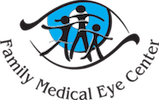Near Sightedness (Myopia)
When the eye is unable to focus on distant objects, but can see up close, it is said to be myopic or near-sighted.
Description
When the eye is unable to focus on distant objects, but can see up close, it is said to be myopic or near-sighted. This usually becomes apparent early in the second decade of life and may progress until about the age of twenty. Glasses and contact lenses have been used for many years to successfully correct myopia. Additionally there have been great advances in contact lens and spectacle lens technology which make these options more affordable, more effective, and more fasionable.
Symptoms
Symptoms of Myopia can include trouble seeing objects that are far away, trouble seeing the blackboard, television, or movie screen, and reduced school or athletic performance.
Children younger than age 8 or 9 may not realize that they have trouble seeing objects far away. Parents or teachers may suspect nearsightedness when a child squints or frowns, holds books or objects very close to the face, sits at the front of a classroom or theater or close to the TV or computer, is not interested in sports or other activities that require good distance vision, or gets headaches regularly.
Treatment
An examination will determine the magnitude of myopia at which point glasses or contacts may be used to handily correct this condition. Additionally, parents should be proactive about their children’s eye health and schedule regular eye exams with Dr. Fox, a specialist in pediatric care. If you notice a change in your child’s behavior an exam should be scheduled in order for your child to reach his or her full vision potential. For your convenience, Family Medical Eye Center is able to both prescribe and supply these products at our office.

